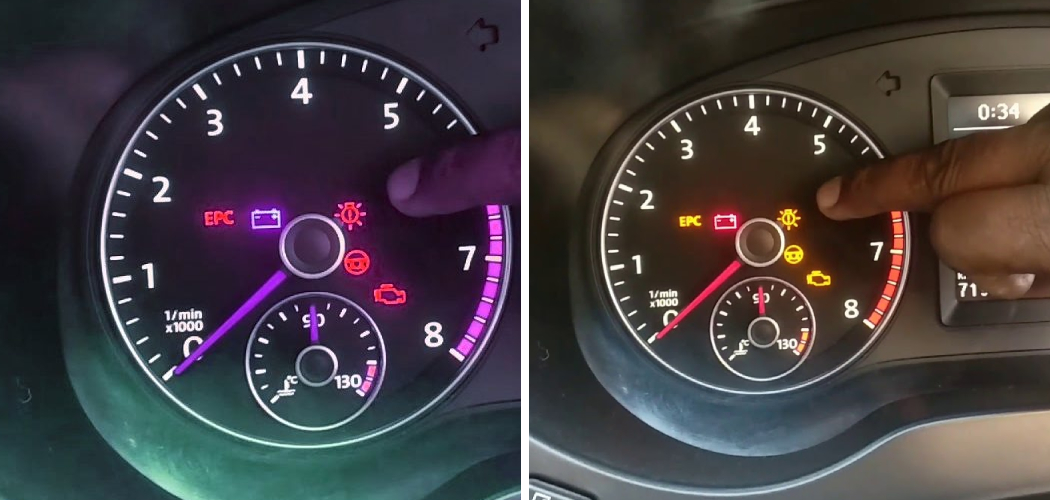Vehicle warning lights are critical indicators of your car’s health and safety. They serve as the first sign that something may be going wrong, and understanding how to turn off warning lights—by addressing the issues they signal—is essential for any driver.
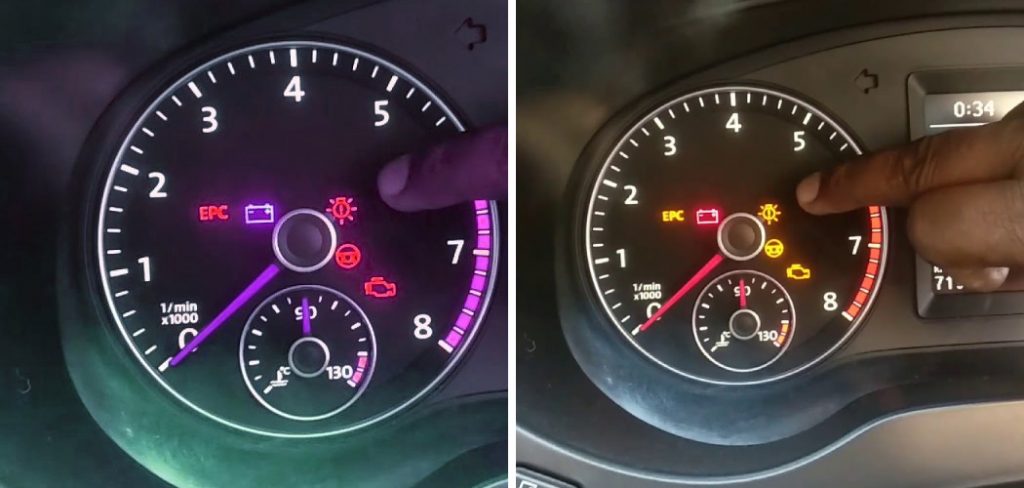
Ignoring these alerts can lead to severe car damage or even pose a risk to your safety on the road. By ensuring these lights are given the proper attention, drivers maintain the longevity of their vehicles and uphold the responsibility of safe driving for themselves and others on the road.
Recognizing Different Warning Lights
The vehicle’s dashboard is akin to its communication center, where it conveys crucial information to the driver through various warning lights. These signals are color-coded—red, yellow, and blue/green—indicating the urgency level and the type of attention required.
- Red Warning Lights: These lights signify immediate attention. Common red lights include the Engine Check and Oil Pressure light.
- Engine Check Light: This may indicate a spectrum of issues, from a loose gas cap to serious engine trouble.
- Oil Pressure Warning Light: Typically comes on due to low oil levels or a problem with the oil pump.
- Yellow Warning Lights: Yellow or orange lights suggest caution and that components need to be serviced soon.
- Tire Pressure (TPMS) Light: Indicates that the tire pressure is below or above the recommended level, requiring attention.
- Engine Check Light (Yellow): This might suggest that there is a non-emergency engine issue, but it still requires a check-up.
- Blue/Green Warning Lights: These colors generally indicate that a system is operational or in use, such as headlights or indicators.
Determining the Source of the Problem
Understanding the root cause of a warning light is paramount in ensuring your vehicle’s health and safety. Simple fixes often involve issues you can rectify yourself, such as securing a loose gas cap or inflating tires to the correct pressure. These are often the causes behind the activation of certain lights, like the aforementioned Tire Pressure Monitoring System (TPMS) Light.
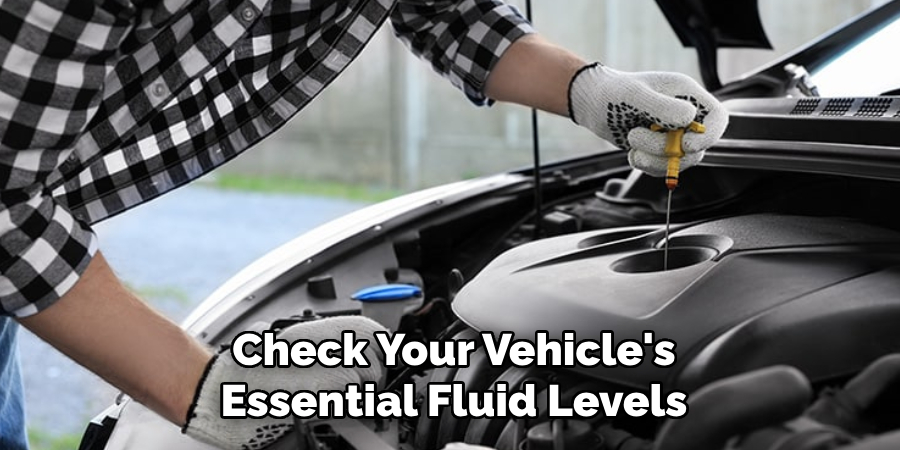
Conducting a basic visual inspection can help discern quick fixes from more intricate problems. It’s advisable to routinely check your vehicle’s essential fluid levels, such as oil, coolant, brake fluid, and tire pressure, even when warning lights are absent. When a warning light does come on, reexamining these components is a good first step.
Diagnostic tools like OBD-II scanners can be beneficial for a more thorough investigation. These tools connect to the onboard diagnostic system of your car to provide error codes, which can indicate specific issues. While an OBD-II scanner can offer insights, the complexity of modern vehicle electronics means the codes provide a starting point rather than a complete diagnosis.
Despite what a visual check or a scanner might suggest, there are numerous complex issues that require professional expertise. These might include internal engine repairs, transmission troubles, or electrical system malfunctions.
Due to the specialized knowledge and tools required, seeking the aid of a qualified mechanic is not only recommended but can be crucial in addressing these intricate problems correctly and safely. Always remember, while simple fixes are good for immediate solutions, consulting with a mechanic for complex issues ensures a thorough repair and safeguards your vehicle’s functionality in the long term.
When to Turn Off the Light Yourself
There are instances where a warning light can be resolved with simple fixes, and the driver can safely turn off the light themselves post-action. For example, a loose gas cap can trigger the Check Engine Light. If this occurs, safely pull over, tighten the gas cap until it clicks, and then check if the light turns off after driving for a short distance.

Likewise, the Tire Pressure Monitoring System (TPMS) Light requires attention to tire inflation. If this light illuminates, use a tire gauge to confirm pressure levels and inflate or deflate the tires as necessary to meet the manufacturer’s recommended PSI. To reset the TPMS, consult your vehicle’s manual—some cars may reset automatically while driving, while others may have a manual reset button.
Before attempting any correction, always refer to the car’s manual for specific instructions, as procedures can vary by model. Additionally, if resetting the tire pressure doesn’t extinguish the TPMS light or it re-illuminates soon after, this could indicate a more severe issue like a tire puncture or faulty sensors.
Though these DIY approaches can deactivate certain warnings, they are not a fix-all. Always seek to address the root cause behind the warning lights to ensure the continued health and safety of your vehicle, and remember that for persistent or unclear issues, professional evaluation is paramount.
When to Seek Professional Help Immediately
Ignoring critical warning lights on your dashboard can be detrimental to both your vehicle’s integrity and your safety. Immediate professional help should be sought if you encounter any of the following warning lights:
- Oil Pressure Warning Light: This light indicates a severe drop in oil pressure, which could damage the engine irreversibly.
- Battery Charge Warning Light: If this light stays on, it could mean the battery is not charging properly, and you risk the car stopping unexpectedly.
- Temperature Warning Light: This light signals that the vehicle is overheating, which can lead to engine damage if not addressed swiftly.
Each of these lights represents a vital system in your car, and failure to seek professional assistance could result in costly repairs or place you in a dangerous situation. An overheating engine could lead to a breakdown or even a fire, a failing battery might cause you to lose lighting or power steering at critical moments, and low oil pressure can quickly cause severe engine damage.
It is crucial to prioritize your safety and the health of your vehicle. Always stop driving as soon as it is safe to do so and contact a professional mechanic. Regular maintenance and promptly addressing warning lights can extend your vehicle’s life and keep you safe on the road.
Safety Precautions and Disclaimer
The safety of drivers and the integrity of your vehicle is of utmost importance. Always follow safe practices when addressing vehicle maintenance, and be aware that attempting complex repairs without professional training could lead to further damage or personal injury. This guide should not replace the advice of a qualified mechanic.
While we provide information to assist you in understanding your vehicle’s warning lights, we stress that any intricate or uncertain issues should be handled by professionals. Prioritize safety, regularly maintain your vehicle, and adhere to responsible driving habits to ensure your and others’ well-being on the road.
How to Turn Off Warning Lights: A Comprehensive Guide
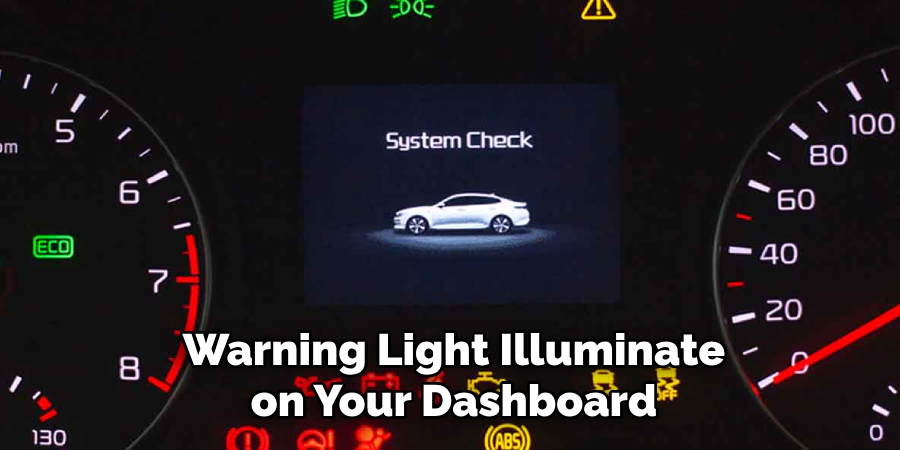
Should a warning light illuminate on your dashboard, it’s an indicator that your vehicle may be experiencing a technical issue that requires attention. While some lights may reflect minor issues that can be resolved with simple action, others are indicative of serious concerns that warrant immediate professional intervention. Below is an overview of common vehicle warning lights, their potential causes, and appropriate measures to take:
1. Engine Check Light
The Engine Check LightThe Engine Check Light is one of the more familiar dashboard alerts for drivers and can signify a range of issues, from minor, like a loose gas cap, to more severe problems, including sensor malfunctions or emissions control issues. Basic troubleshooting steps include:
- Check if the gas cap is tight; if it’s loose, secure it and check if the light turns off after a short drive.
- Using an OBD-II scanner to retrieve trouble codes that could provide insight into the problem.
If the issue is a minor sensor glitch or temporary misreading, the light may turn off on its own after a few driving cycles. However, if it persists, you should seek professional help, particularly if the light is flashing, which denotes a more urgent issue.
2. Tire Pressure Monitoring System (TPMS) Light
The Tire Pressure Monitoring System (TPMS) Light warns when tire pressure is too low or, in some cases, too high. There are two types of TPMS: direct and indirect. The direct system uses pressure sensors on each wheel, while the indirect system works with the anti-lock brake system to monitor tire speed and infer pressure from that.
To reset the light, refer to your vehicle’s manual, as the process can differ by model, and restore tires to their proper inflation as indicated by your vehicle manufacturer. Ensuring proper tire inflation is critical for vehicle stability, fuel efficiency, and reducing tire wear.
3. Oil Pressure Warning Light
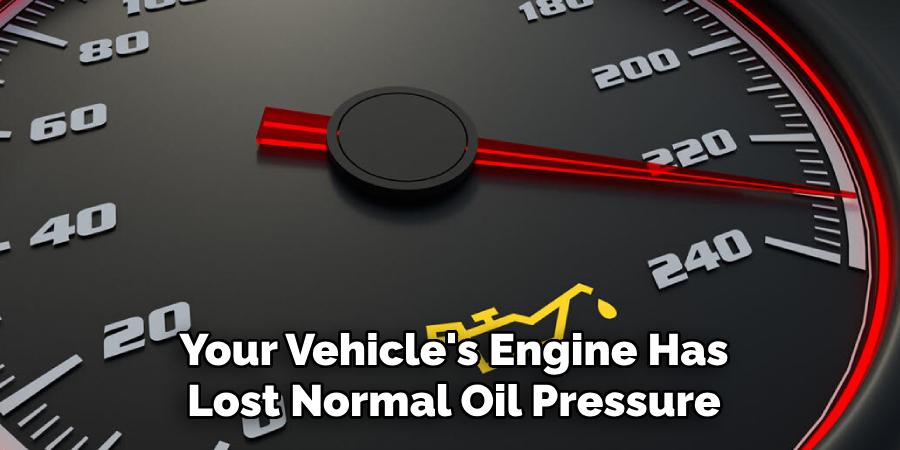
The Oil Pressure Warning Light is a critical indicator that should prompt an immediate response. It implies that your vehicle’s engine has lost normal oil pressure, which is essential for lubricating engine components. If this light comes on while driving:
- Safely pull over and turn off the engine.
- Check the oil level and add more if necessary.
- Do not continue driving if the light remains on or if oil levels are not low. This situation calls for an immediate consultation with a mechanic to prevent potential severe engine damage.
4. Battery Warning Light
A lit Battery Warning Light can imply issues with the charging system, potentially a faulty alternator, loose or corroded battery cables, or a dying battery. If ignored, it may result in the vehicle losing power unexpectedly. Troubleshooting steps include:
- Inspect battery connections for corrosion or looseness.
- Check the serpentine belt for wear as it drives the alternator.
- Use a voltmeter to verify the battery’s state of charge.
Due to the electrical complexities involved, seeking professional diagnosis and repair to resolve charging system failures is crucial.
5. Brake System Warning Light
Alerts from the Brake System Warning Light can translate to various potential issues:
- Low brake fluid: potentially indicative of a leak in the brake system.
- Worn brake pads: requiring replacement for proper functioning of brakes.
- Anti-lock Brake System (ABS) malfunction: signifying a problem with the ABS, which can affect vehicle control during sudden stops.
Never ignore this light; proper brake function is crucial for your safety. Immediate inspection and repair by a professional mechanic are recommended.
6. Temperature Warning Lights
Both engine and coolant temperature warning lights indicate overheating, an issue that should be addressed promptly to avoid engine damage. Potential causes include:
- Low coolant levels may suggest a leak in the cooling system.
- Malfunctioning thermostats: can prevent coolant from flowing through the engine properly.
- Radiator issues: blockages or leaks can impair the cooling system’s effectiveness.
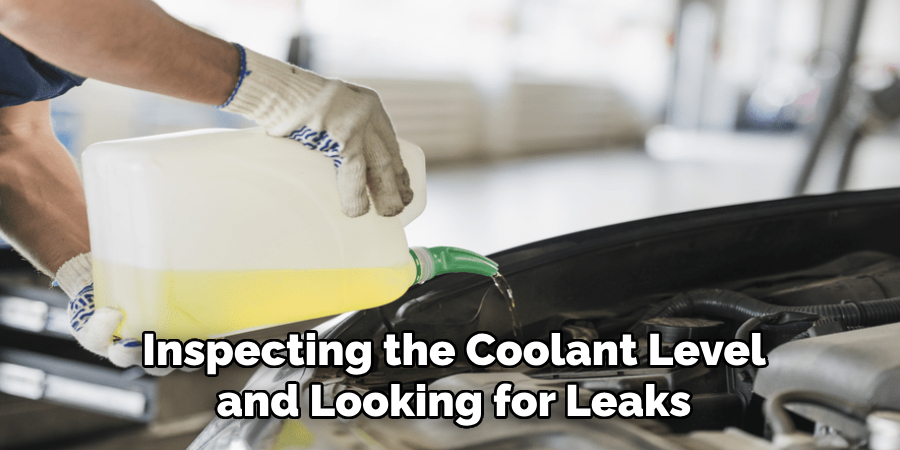
If the temperature warning light comes on, safely pull over, turn off your vehicle, and allow the engine to cool. Inspecting the coolant level and looking for leaks may help diagnose the issue, but complex cooling system problems and repairs should be handled by professionals.
Using Diagnostic Tools
On-board Diagnostics II (OBD-II) scanners are advanced tools that have become an asset for both DIY car enthusiasts and professional mechanics. These devices can interface with a vehicle’s computer system to retrieve diagnostic trouble codes (DTCs) and other vital performance data. When a warning light surfaces on the dashboard, an OBD-II scanner serves as a key to unlock the mystery behind it, providing initial diagnostic insights.
To use an OBD-II scanner, locate your vehicle’s OBD-II port, typically found under the dashboard near the steering wheel, and plug in the scanner. Once connected, the scanner powers on, and you can navigate its menu to read the diagnostic codes. After retrieving the codes, you can refer to your vehicle’s service manual or online resources to understand what the codes indicate.
However, it’s essential to recognize the limitations of self-diagnostics. An OBD-II scanner may provide the code but doesn’t offer a comprehensive analysis or guarantee a fix. Many vehicle issues stem from complex systems that can require a deeper understanding of automotive mechanics.
While an OBD-II scanner can guide you toward the problem area, professional interpretation, and diagnosis are critical to ensure accurate repairs and to address any underlying issues that aren’t immediately apparent from the codes alone.
That’s it! You’ve now learned how to turn off warning lights and understand their significance. Remember, while it’s tempting to ignore a warning light or try to fix the issue yourself, seeking professional help can save you time and money and ensure your safety on the road.
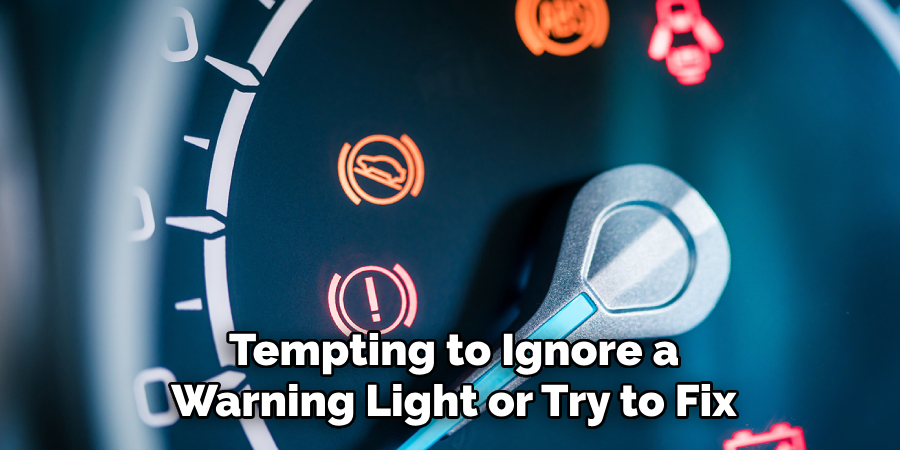
Regular maintenance and timely repairs are crucial for keeping your vehicle running smoothly and avoiding potential breakdowns. So pay attention to those warning lights and take action when needed.
Seeking Professional Help
Consulting a qualified mechanic is crucial when facing complex automotive problems that extend beyond the scope of simple diagnostics and repairs. A seasoned professional brings deep technical knowledge, specialized tools, and experience to diagnose accurately and remedy issues promptly.
They can also recognize the intricate interdependencies in vehicular systems, intercepting minor issues before they blossom into major problems, ensuring a longer life for your vehicle and a safer driving experience.
When it comes to choosing a repair shop, options generally fall into a few categories: dealerships, franchise auto repair facilities, independent shops, and specialty shops. Dealerships are knowledgeable about specific makes and know the latest model updates, but they might be more expensive than other options.
Franchise auto repair facilities can offer standardized services at competitive rates. Independent shops provide personalized service, and because they rely on community reputation, they often strive for customer satisfaction. Specialty shops dealing with specific system repairs like transmissions or brakes can offer detailed services for those issues.
Choosing a reputable repair shop involves some research. Look for certifications like ASE (Automotive Service Excellence), reviews, and recommendations from friends and family. Ensure the shop has experience with your make and model, and ask about their warranty policies.
When it comes to effective communication, be as detailed as possible about the issues you’re experiencing. Do not hesitate to ask questions if you do not understand the repair estimates. Request a detailed written estimate and a clear explanation of the work to be done.
Understanding a repair estimate is also important. A trustworthy estimate should itemize the cost of parts, labor, and any diagnostic fees. Ask about anything you don’t understand and compare the charges with what you might find at other shops. With well-informed, clear communication, you can better collaborate with your mechanic to ensure your vehicle is in top working order.
Maintaining Your Vehicle to Prevent Warning Lights
Regular adherence to a maintenance schedule is a pivotal aspect of vehicle ownership that directly contributes to its longevity, reliability, and safety. A disciplined approach to maintenance tasks, such as timely oil changes, is vital to ensure that engine components remain well-lubricated and functioning smoothly.
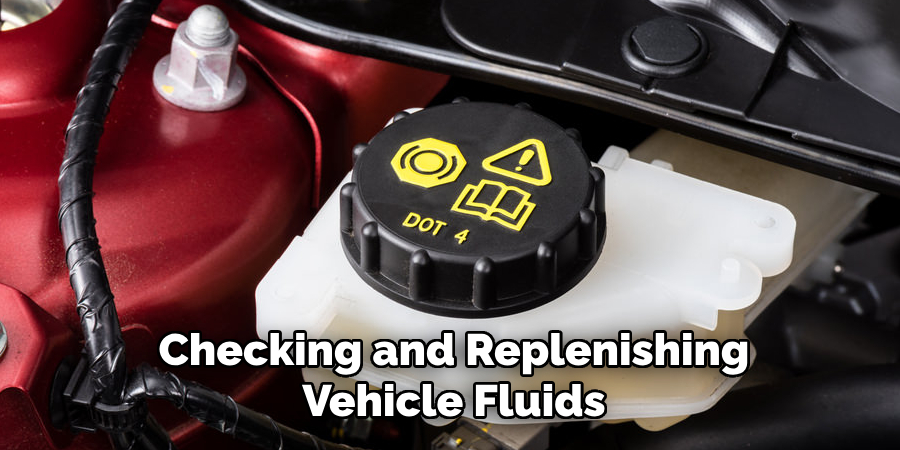
Consistently checking and replenishing vehicle fluids, like brake fluid, coolant, and transmission fluid, can preempt system failures and maintain optimal performance. Regular tire rotations help even out tire wear, extending tire life and improving road grip, while clean air and fuel filters ensure efficient engine operation and fuel consumption. Ignoring these tasks can lead to deteriorated vehicle performance, the emergence of warning lights, and the risk of costly repairs down the road.
By embracing proactive car care, not only do you enhance your vehicle’s performance and safety features but also maximize its resale value. Committing to a regular maintenance schedule is a simple but effective strategy that any car owner can employ to ward off potential automotive troubles before they arise, safeguarding both their peace of mind and their wallet.
Conclusion
In summary, understanding how to turn off warning lights by addressing their root causes is crucial for vehicle safety and longevity. Prompt attention to these alerts, coupled with responsible driving habits and adherence to a regular car maintenance schedule, can prevent minor issues from escalating into major repairs.
For complicated automotive problems, seeking a professional’s expertise is prudent and cost-effective in the long run. As a vehicle owner, prioritizing these practices ensures your car remains a reliable mode of transportation and retains its value over time.

